I am not a bird feeder guy. I am not well informed the different type of feeders, or the different types of feed, or any of that stuff. But, a couple of times a year—usually when I have a little extra time away from work—I will fill the bird feeder with seeds, just to see what will show up. The last time I became so inclined, I used a trail camera or two to help me keep and eye on things. What I discovered is, that when it comes to bird feeders, there is a day shift and a night shift. You may want to know about both. Here is what I found…
It took a few days for the birds to find the feeder, but once they did it was the White-winged Doves that seemed to be the common theme.
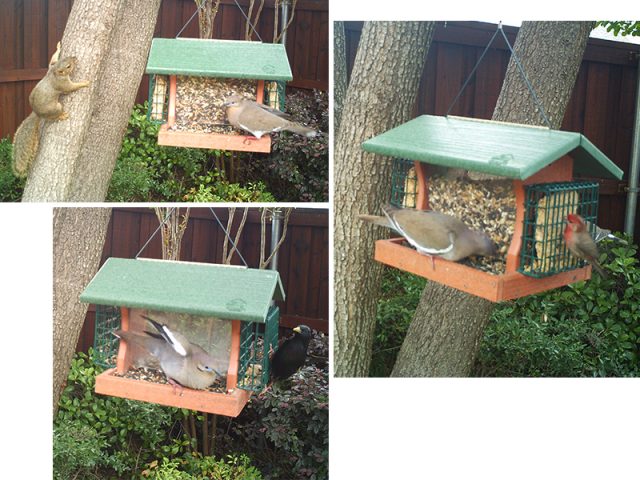
White-winged Doves are a relative newcomer to the Dallas/Fort Worth Area, having just arrived here in just the last 20 years or so. In that time they have become a fixture on bird feeders all across the metroplex. Some believe that bird feeders may even be partially responsible for the northward expansion of this bird’s home range. Here is what Wikipedia has to say about the White-winged Dove:
The white-winged dove (Zenaida asiatica) is a dove whose native range extends from the south-western United States through Mexico, Central America, and the Caribbean. In recent years with increasing urbanization and backyard feeding, it has expanded throughout Texas, into Oklahoma, Louisiana and coastal Mississippi. It has also been introduced to Florida.
The white-winged dove is expanding outside of its historic range into Kansas, Arkansas, Oklahoma, and northern New Mexico. The dove’s range has even expanded drastically northward into Canada. While the dove was introduced to Alberta, it still remains a common spring and summer visitor in Southern Alberta and Saskatchewan.
White-winged doves are large, plump doves at 29 cm (11 in). They are brownish-gray above and gray below, with a bold white wing patch that appears as a brilliant white crescent in flight and is also visible at rest. Adults have a patch of blue, featherless skin around each eye and a long, dark mark on the lower face. Their eyes are bright crimson. The sexes are similar, but juveniles are more brown than adults. They have a blue eye ring and their legs and feet are brighter pink/red. Young also have brown eyes. Males have a slight iridescent sheen on their heads.
The cooing calls is hoo, hoo, hoo-hoo. A drawn-out “hoo-a” sound is used to tell others about the presence of a predator. To impress females, males circle them with tail spread and wings raised. Males and females work together in raising the young. While calling, the tail flares. Families and nestmates often stay together for life, perching and foraging together.
You can read more about the range expansion of White-winged—and other dove species—here on the Audubon website: What we’re learning: Dynamic Dove Expansions, Citizen Science illustrates the spectacular range expansions taking place throughout North America
Of course, White-winged Doves were not the only birds to appear. After just a day or two, a whole multitude of different species (and some other critters) began to arrive—especially on the ground under the feeder, where they spent their time feeding on seeds spilled from up above. Let’s take a look at some examples…
After the birds, came the hungry Fox Squirrels. Many bird feeder enthusiasts do not appreciate it when these guys show up to raid the stores. These inventive rascals can find a way to circumvent almost any kind of deterrent people can think to install. Myself? I enjoy their antics, and couldn’t have been happier to have them around. We had several different squirrels come each day, often sharing the bounty with the birds that were also there to feed. We even had a visit from our famous neighborhood piebald squirrel. Take a look…
And, speaking of unusual… You never know what kind of oddity might show up at your bird feeder. In addition to the piebald Fox Squirrel, we also had this strangely colored House Sparrow spend some time in our backyard. I’m not sure exactly what explains his condition. Maybe it is a molt in process, or maybe it is something else. Feel free to use the comment section below to leave your thoughts, if you would like.
As you have seen, it took a few days for the day shift to get revved up. So, what about the night shift? As it turned out, things at the bird feeder started hopping immediately after the lights went out on the first night. The rats and mice living in the landscaping around the homes in our neighborhood wasted no time locating and accessing the bird feeder’s reliable food cache.
As the days wore on, and word got out about the feeder, we had a few additions to the mix. At night, a group of young Raccoons made stopping by the bird feeder a regular stop on their nightly patrol.
And during the day, we started seeing this Cooper’s Hawk stop by every now and again. Cooper’s Hawks are one of our more common hawks in North Texas. They specialize in hunting birds, and this one was hoping to catch a nice fat dove with its guard down. These critters are clever and adaptable!
Wikipedia describes the Cooper’s Hawk in this way:
Cooper’s hawk (Accipiter cooperii) is a medium-sized hawk native to the North American continent and found from Southern Canada to Northern Mexico. As in many birds of prey, the male is smaller than the female. The birds found east of the Mississippi River tend to be larger on average than the birds found to the west. Other common names for the Cooper’s hawk include: big blue darter, chicken hawk, flying cross, hen hawk, quail hawk, striker, and swift hawk.
These birds capture prey from cover or while flying quickly through dense vegetation, relying almost totally on surprise. One study showed that this is a quite dangerous hunting style. More than 300 Cooper’s hawk skeletons were investigated and 23% revealed healed fractures in the bones of the chest. Cooper’s hawks prey almost exclusively on small to mid-sized birds. Typical prey species include American robins, other thrushes, jays, woodpeckers, European starlings, quail, icterids, cuckoos, pigeons and doves. Birds preyed on can range in size from wood-warblers to ring-necked pheasants. They may also prey upon the raptor American kestrel and other smaller raptors, including their cousin the sharp-shinned hawk. They have been known to rob nests and may supplement their diet with small mammals such as chipmunks, hares, mice, squirrels, and bats. Even more rarely, they may prey on lizards, frogs, or snakes. It normally catches its prey with its feet and kills it by repeatedly squeezing it and holding it away from its body until it dies. They have also been seen drowning their prey, holding it underwater until it stops moving. The hawks often pluck the feathers off their prey on a post or other perch. They also hunt songbirds at backyard feeders, perching nearby then swooping down and scattering the birds to single one out in flight. They may pursue prey on the ground by half running and half flying.
To get a better sense of the daily activity at our bird feeder, take a look at the video below. In it you will find a 24 hour timelapse on the bird feeder itself, and another focused on the ground below. The resulting footage might be startling to some…
So, what are we supposed to make make of all this? Most people would be understandably put off by the multitude of rats and mice that appeared at this bird feeder every night.
For years I have been told that bird feeders attract unwanted rodents—with the implication being that the rats and mice would not be there without the bird feeder as a source of food. But, that is clearly not the case here. These mice and rats were were just waiting in the wings, and appeared at the bird feeder the first night it was put out.
These pictures were taken in a typical middle class neighborhood. Its clean and tidy. There are not a lot of obvious food sources around—bird feeder or otherwise. Rats and mice are not normally seen during daylight hours. Signs of their presence in the neighborhood is not obvious—yet they ARE present, and in sizable numbers.
What this tells me is that these kind of rodents can be expected to be ever present in most all North Texas neighborhoods. That means nearly all of us already have a healthy population of rats and mice in our yards. Their numbers may vary with the amount of vegetation, landscaping, and cover, but these rodents are present whether there is a bird feeder available or not.
Now, the question becomes, is this situation a problem or not? In my judgement, if the presence of rats and mice in your yard was NOT a problem BEFORE you knew about it, there’s no reason it cannot continue to be a non-issue after the discovery.
Rats and mice become a problem when they enter our houses, eat our food, and destroy our property. If they are not doing these things, then they are not a problem. The key is keeping them outside of the home.
Of course, a bird feeder will encourage rats and mice to concentrate their activities in a place that is close to your home. This might very well increase the likelihood that they will discover a way into your home and become a nuisance. This is a legitimate concern.
If you want to continue to feed your favorite song birds, but not the rats and other vermin, the answer is simple. Just take down the bird feeder every night and keep the ground underneath it free of spilled seeds. It’s a little extra work, but its the only way!


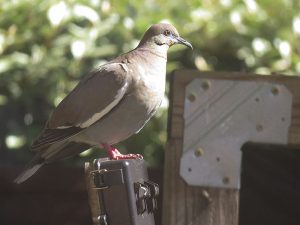
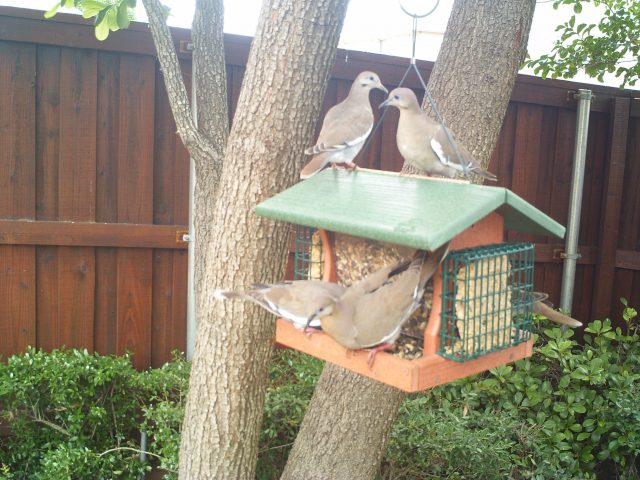

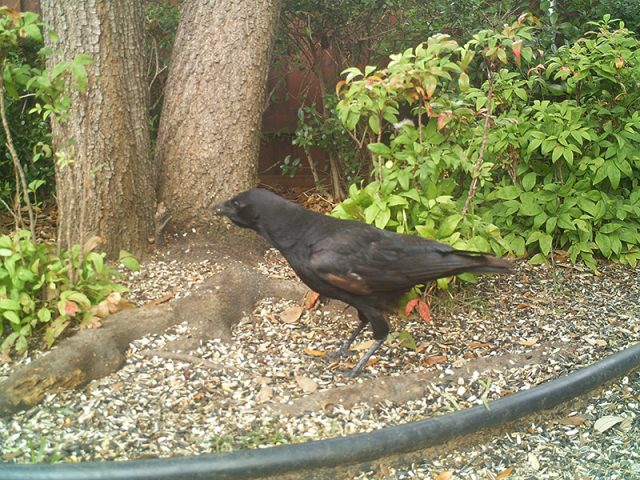

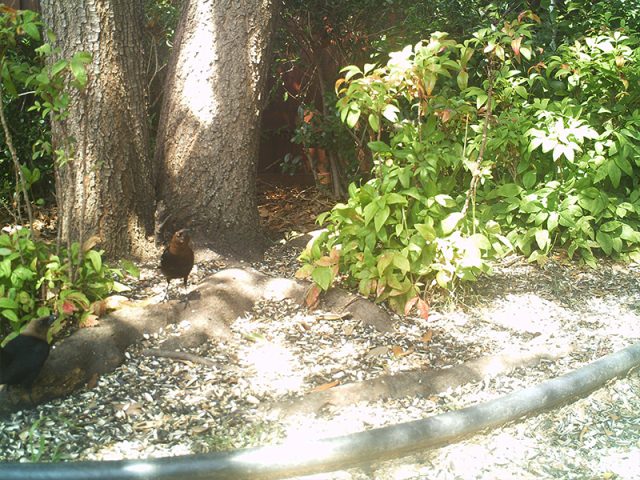

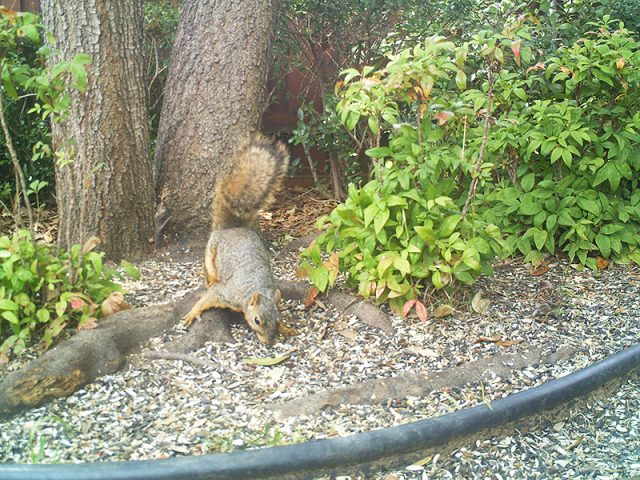
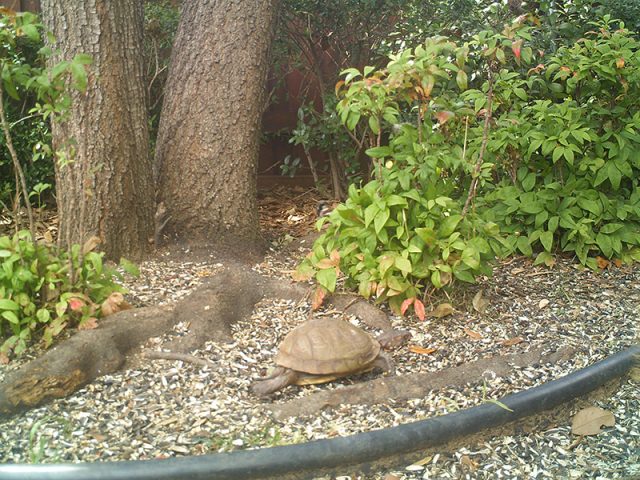

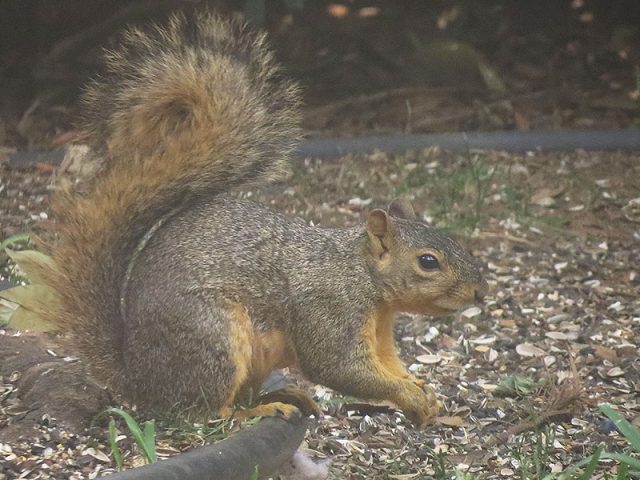
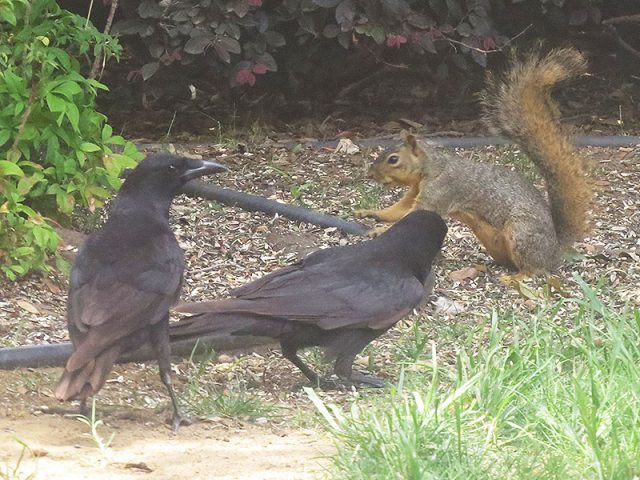

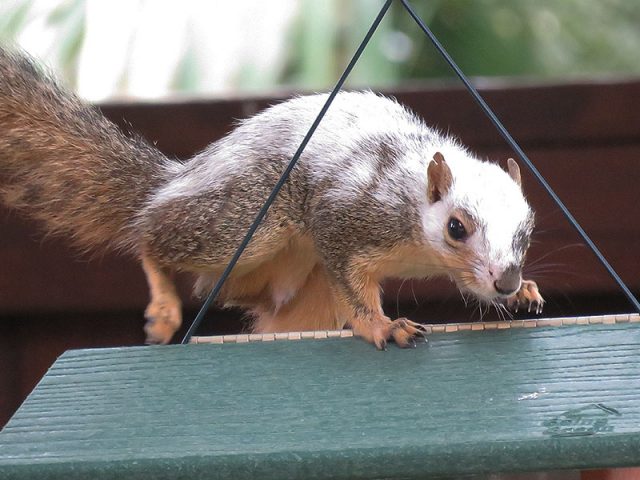
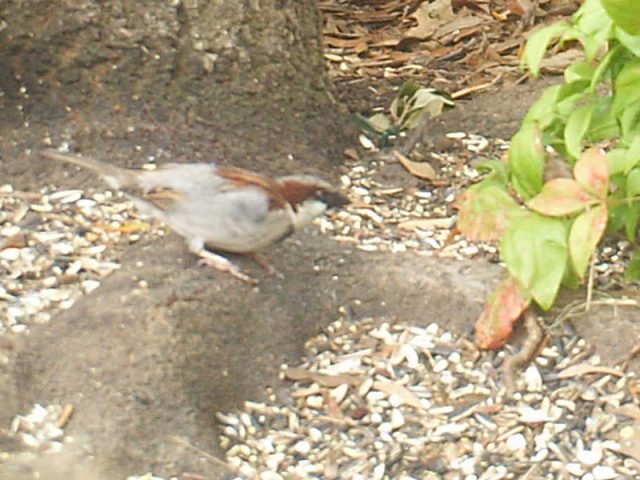
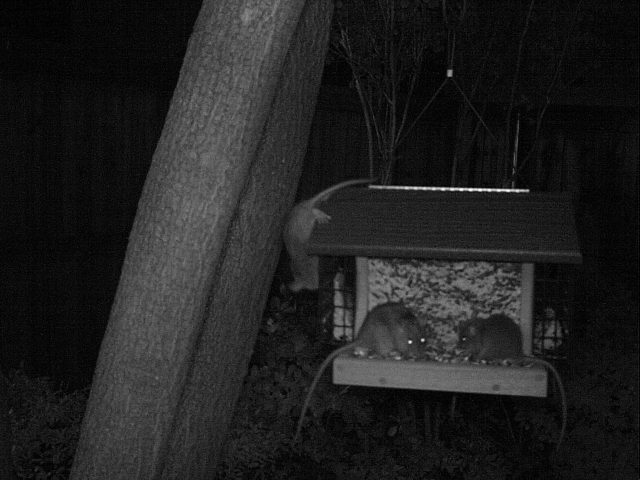
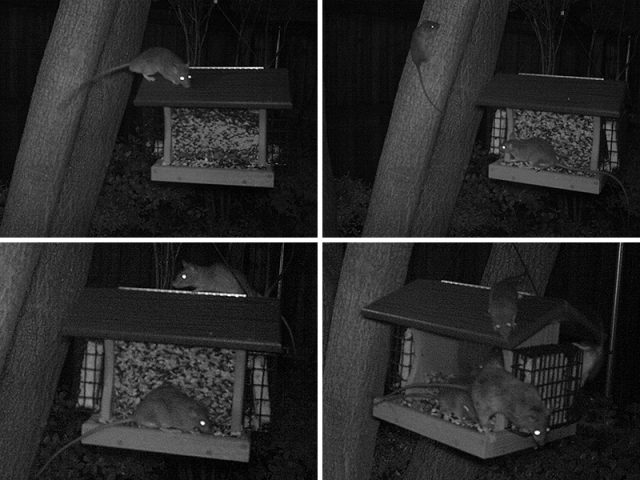
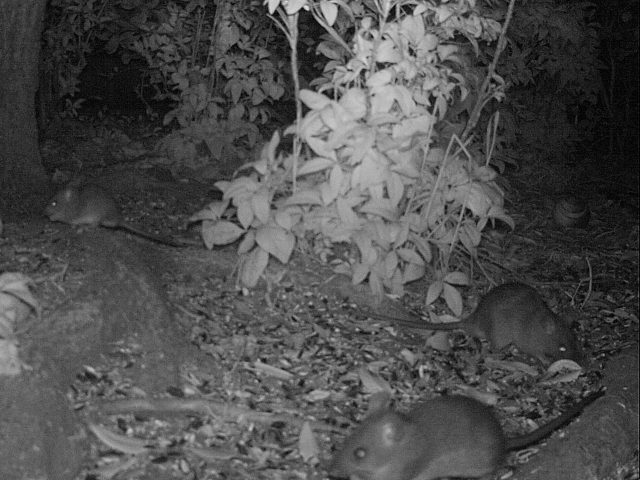

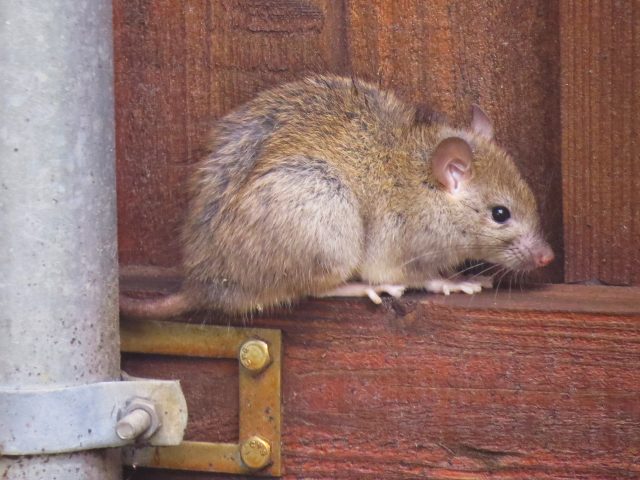


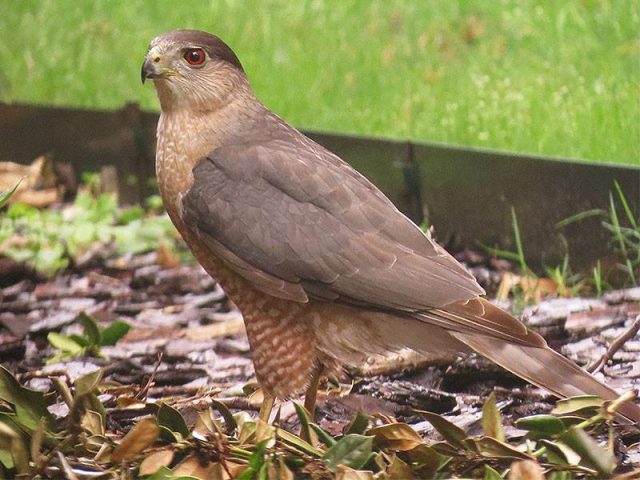



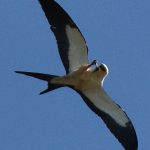

I learned a few years back while living in Virginia that birds feed 3x per day. Early morning shortly after waking up to replenish what they burned off during the day, noonish feeding to keep them moving, later afternoon/early evening big feeding before settling in for the night. need the energy to keep warm
I put a raccoon guard on my bird feeding pole and it is effective against squirrels, so I would think perhaps it works against mice and rats actually getting into the feeder. I also have a large screen platform that limits the amount that falls on the ground. We have plenty of hawks and snakes around that seem to keep the population of small rodents in balance.